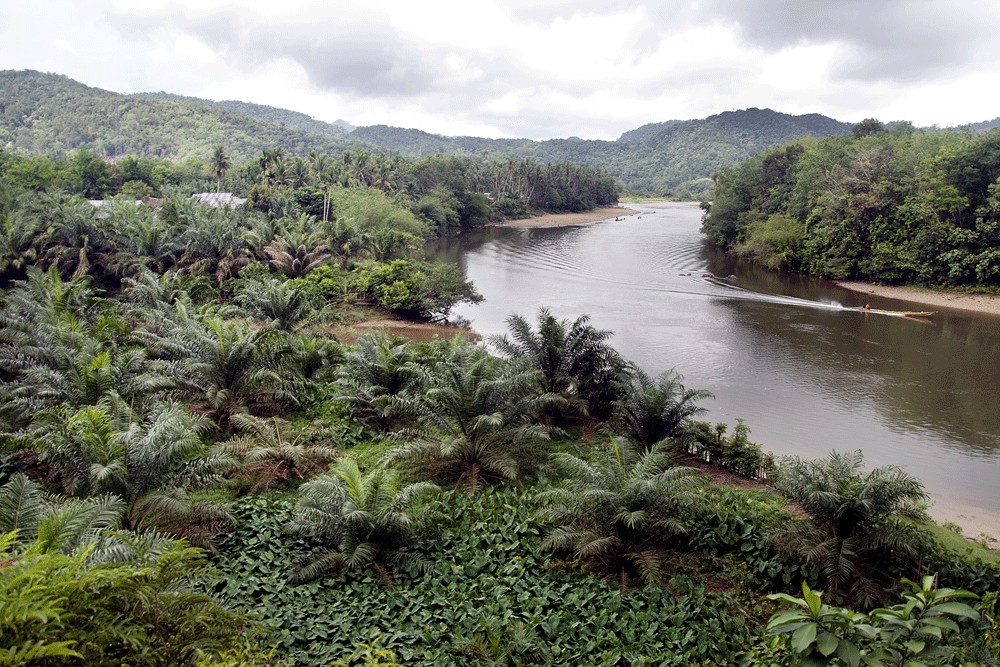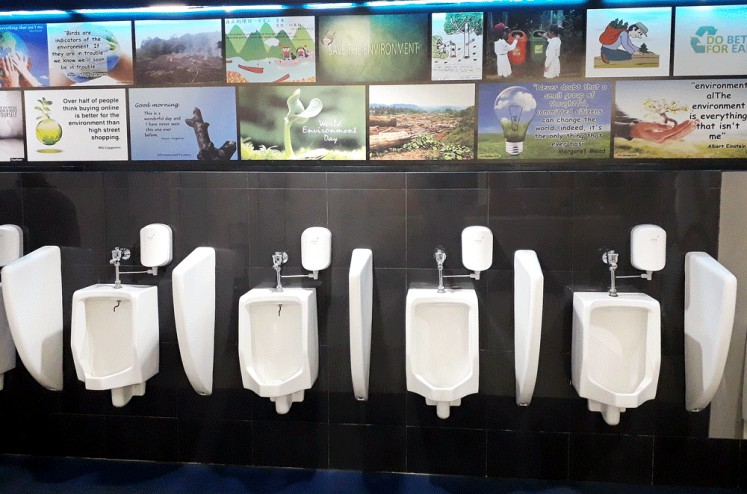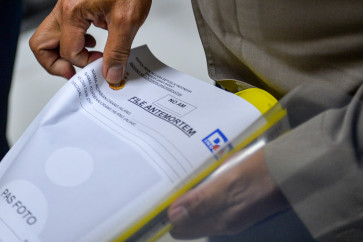The last bastion of Sumatran tigers
This year alone, dozens of hot spots, most of them triggered by illegal practices, have emerged in Riau.
Change text size
Gift Premium Articles
to Anyone
 Into the wild: Subayang River, which parts the Bukit Rimbang Bukit Baling Wildlife Sanctuary, has seen numerous conflicts of interests between forest administrators and local stakeholders. (The Jakarta Post/Tarko Sudiarno)
Into the wild: Subayang River, which parts the Bukit Rimbang Bukit Baling Wildlife Sanctuary, has seen numerous conflicts of interests between forest administrators and local stakeholders. (The Jakarta Post/Tarko Sudiarno)
T
he public toilets at Sultan Syarif Kasim Airport in Pekanbaru, Riau, feature dozens of neatly arranged posters and photos about damaged forest in the region.
Despite the posters and photos, their message seems to go unheeded.
The destruction of Riau’s environment as frequently reported by the media with its notorious haze engulfment, has become the norm.
This year alone, dozens of hot spots, most of them triggered by illegal practices, have emerged in Riau. These practices recently resulted in the death of a pregnant tiger with her unborn cubs after she was caught in a trap at Bukit Rimbang Bukit Baling Wildlife Sanctuary.
The death of an already endangered female Sumatran tiger was another episode that seemed to confirm the lack of concern when it comes to the environment and natural wildlife habitats in Riau.
Febri Anggriawan Widodo of the World Wide Fund for Nature (WWF) Indonesia, who witnessed the necropsy of the trapped female tiger, described its condition as very tragic.
“It took a long time to untie the Sumatran tiger as the rope was so strong. Both its eyes were bulging and its tongue was sticking out. The animal must have suffered great pain before dying,” Febri said.

Had the tiger not died, and survived to deliver her cubs, it would have been a blessing amid the endangered status of her kind.
The sanctuary, or Rimbang Baling Forest as local people call it, is located in the downhill area of the Bukit Barisan mountain range in Riau and West Sumatra provinces. It constitutes the last bastion of the habitat of Sumatran tigers.
“Based on our survey carried out from 2012 to 2015, only slightly more than a dozen Sumatran tigers were left in Rimbang Baling, meaning they were on the threshold of extinction and categorized as critically endangered. One level below and they would totally vanish,” Febri, who joined the expedition to the forest, said.
According to Febri, unless the Indonesian government and its relevant institutions seriously tackle the case, the Sumatran tigers will be lost and future children will only be able to see the fantastic beast in books.
“We need only to wait for the time when Sumatran tigers are gone after the extinction of Javanese tigers,” he said.
For the rescue of Sumatran tigers in Rimbang Baling, Febri has invited several state agencies and NGOs to form a consortium called the Integrated Tiger Habitat Conservation Program (ITHCP/IMBAU), with the main aim of saving Sumatran tigers’ habitat.
The consortium also provides guidance and training for people living around the sanctuary zone to encourage them to care for the environment.

“The consortium means an appeal to the public to be concerned about environmental conservation,” he explained.
In mid-September, an ITHCP/IMBAU team and The Jakarta Post cruised along Subayang River, which parts the Bukit Rimbang Bukit Baling Wildlife Sanctuary.
No less than 10 villages are in the protected forest, and in their history many conflicts of interests have arisen between forest administrators and local economies, involving illegal logging, fishing, killing of protected species including Sumatran tigers and random expansion of plantations.
On the banks of the Subayang, rubber estates and traces of illegal logging can be found.
“In the rainy season when the level of Subayang River rises, people carrying forest wood are frequently seen passing the river, because this stream serves as a major means of transportation for the local community,” Agustinus Wijayanto, the field Manager of ITHCP/IMBAU, said.
The consortium, therefore, encourages people in the forest buffer zone to become engaged in various activities to promote their economic wellbeing as well as art and cultural recreation so as to prevent them from entering the sanctuary. This way, the pressure of forest squatting in the protected zone will be reduced and the conservation of Sumatran tigers’ habitat will be indirectly safeguarded.
“By involving local village figures, we provide estate business guidance covering wood management, organic vegetable crop planting, natural manure making, ecotourism spot organization and community radio studio operation,” Agustinus said.
With the various efforts already undertaken to rescue Sumatran tigers and the tropical forest of Bukit Barisan, the killing of the pregnant tiger seems to render the endeavors futile.









